Frustrated by abandoned carts, low conversion rates, or visitors leaving your online store without buying?
eCommerce popup forms are a powerful digital marketing tool designed to capture visitor attention, recover lost sales, and significantly increase customer conversions.
When used strategically, they don’t just stop exits – they drive action, loyalty, and revenue.
TL;DR: How to Use eCommerce Popup Forms to Grow Your Store
Here’s a quick overview of how to leverage eCommerce popups to boost your store’s leads and sales:
– Strategic Popup Selection: Choose relevant popup formats such as lightbox, floating bars, or interactive spin-to-win popups to maximize engagement and conversion rates.
– Optimal Timing & Triggers: Deploy popups based on user behavior like exit-intent, scroll depth, or inactivity to ensure they appear at the most impactful moments.
– Hyper-Personalization: Tailor popup content based on visitor location, browsing history, or traffic source to deliver highly relevant and compelling offers.
– Continuous Optimization: Regularly track popup performance, measure revenue attribution, and conduct A/B tests to refine campaigns and ensure ongoing growth.
At OptinMonster, we’ve helped over 1.2 million global business owners run highly successful website popup campaigns.
We’ve analyzed popup data from thousands of eCommerce sites, so we know which types and strategies drive conversions (without turning visitors away).
What You’ll Learn in This Comprehensive Guide:
This guide will provide you with an actionable plan to integrate effective popups into your eCommerce strategy, covering:
- The most profitable types of eCommerce popup forms for revenue generation.
- Best practices for timing and triggering popups to maximize conversions.
- Effective offer strategies to convert visitors into buyers or subscribers.
- Techniques for creating helpful, non-intrusive popups that improve your customers’ experience.
By the end, you’ll have a clear roadmap for using popups to plug leaks in your eCommerce sales funnel and boost your store’s profitability.
Table of Contents
- Why Use Ecommerce Popup Forms on Your Online Store?
- What are The Best Types of Ecommerce Popup Forms to Use?
- The Ecommerce Popup Forms Every Smart Store Owner Should Be Using in 2025:
- Key Takeaways: Choosing the Right Ecommerce Popup
- How to Optimize Your Ecommerce Popups for More Conversions & Sales
- Key Takeaways: Ecommerce Popup Optimization
- What Are Common Popup Mistakes in Ecommerce and How Can I Avoid Them?
- Frequently Asked Questions
- Start Growing Your Sales With Ecommerce Popup Forms Today
Why Use eCommerce Popup Forms on Your Online Store?
When used effectively, eCommerce popups can significantly boost leads and conversions for your online store.
According to Wisepops, the average popup conversion rate is 4.65%, with top-performing campaigns reaching up to 20%.
The Proven Benefits of Effective eCommerce Popups:
- Improved Lead Generation: Popups are instrumental in growing email subscriber lists, providing a direct channel for future marketing efforts.
- Abandoned Cart Recovery: Timely popups can re-engage visitors who are about to leave with items in their cart, significantly reducing lost sales.
- Special Offers & Promotions: They serve as an instant and attention-grabbing way to highlight discounts, flash sales, or new product launches.
What Makes an eCommerce Popup Effective?
An effective eCommerce popup follows these three core principles:
- The Right Timing: It appears at a moment that aligns with the user’s journey (such as during exit intent or after a certain amount of browsing time) rather than disrupting it.
- Relevant Offers: The content of the popup is directly aligned with the visitor’s interests, browsing behavior, or the specific page they are viewing.
- User-Friendliness: It provides value without being intrusive, offering clear calls to action and easy dismissal options.
Real-World Impact: How Smart Store Owners Use Popups to Drive Results
Smart eCommerce stores using popups are seeing amazing results like:
- 18.22% more email subscribers with geo-targeted popups
- Doubling their sales conversion rate with exit-intent popups
- Growing their email list by 900% with lightbox popups
- Increasing conversions by 200% with smart geo-targeting
After 12+ years helping 1.2 million customers, we’ve seen every popup and lead gen mistake possible.
OptinMonster helps you avoid these issues. It has over 700 ready-made templates, smart triggers that understand visitors, and tools that make popups helpful instead of annoying.
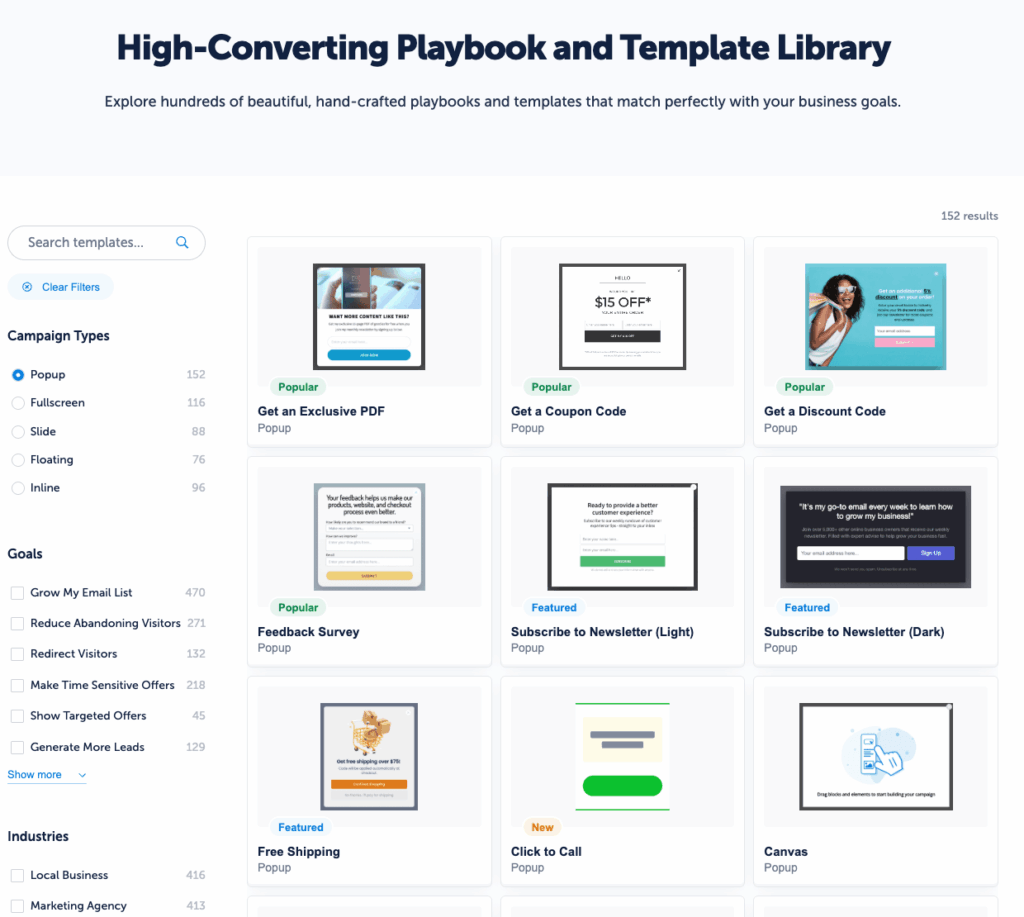
What are the Best Types of eCommerce Popup Forms to Use?
Choosing the right eCommerce popup form is crucial for optimizing your on-site marketing, improving shopper experience, and maximizing engagement.
The most effective popup types seamlessly integrate into the shopping journey without disruption and provide timely offers to visitors.
Here’s an overview of the most impactful eCommerce popup forms and their primary use cases:
| Popup Type | Description | Best For |
| Lightbox Popup | A central, attention-grabbing overlay. | High-value offers, email sign-ups, exit-intent. |
| Floating Bar | A non-intrusive banner fixed to the top or bottom of the page. | Ongoing promotions, free shipping announcements, site-wide alerts. |
| Fullscreen Popup | A complete page-covering takeover. | Major sales announcements, urgent promotions, age verification. |
| Slide-In Popup | A subtle notification from the side or corner. | Product recommendations, social proof, gentle reminders. |
| Countdown Timer | A dynamic clock embedded in any popup. | Time-sensitive offers, flash sales, shipping deadlines. |
| Coupon Popup | Direct delivery of discount codes via popups. | Converting price-sensitive shoppers, reducing cart abandonment. |
| Spin-to-Win Popup | A gamified wheel that offers instant discounts/prizes. | Boosting engagement, interactive lead generation, brand recognition. |
We’ve helped thousands of online stores set up popup campaigns, and certain types consistently outperform others.
The key difference is in their timing and relevance to the customer’s journey.
Each popup type should strategically address a specific phase in your sales funnel, for example:
- Welcome Offers: Ideal for capturing new visitors and encouraging initial engagement.
- Exit-Intent Popups: Crucial for retaining abandoning shoppers and recovering lost sales.
- Upsell Popups: Effective for increasing average order values by suggesting complementary products.
The good news? You don’t need technical skills to create any of these campaigns.
OptinMonster’s intuitive drag & drop builder and extensive library of over 700 customizable templates allow you to launch professional, fully responsive popups within minutes.
Simply choose a template, personalize it to your brand, and publish, no coding or developers necessary.
Next, we’ll dive deeper into each of these core popup types, detailing their specific benefits, optimal trigger times, and how they contribute to increased leads and sales for your eCommerce store.
The eCommerce Popup Forms Every Smart Store Owner Should Be Using in 2025:
Lightbox Popups
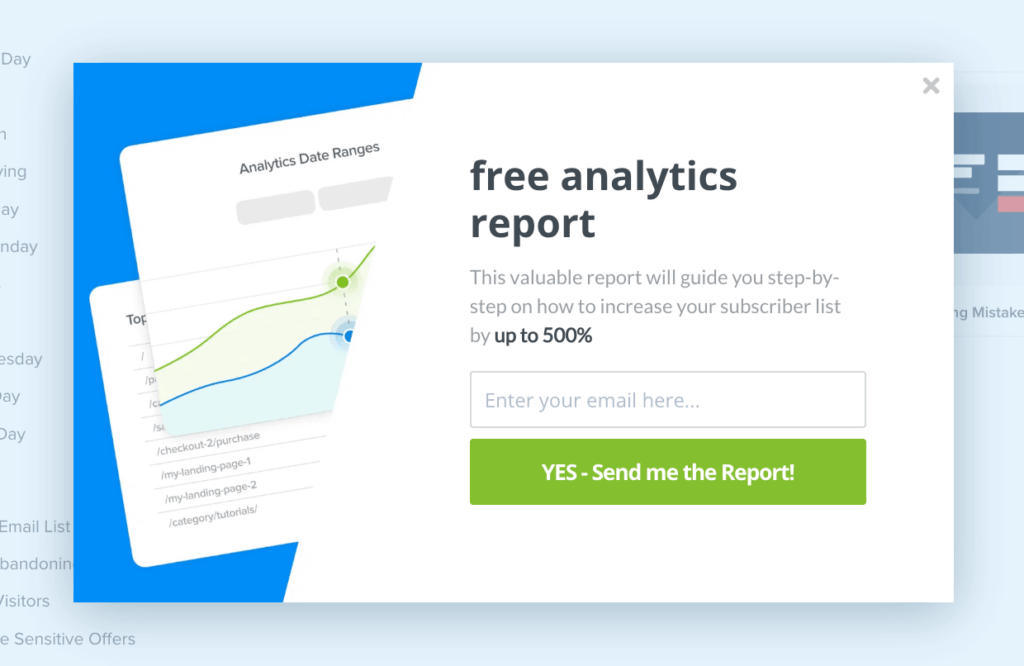
A lightbox popup (also known as a modal popup) is a form that appears centrally on the screen, dimming or darkening the background content.
This design ensures the visitor’s full attention is directed to the popup’s message, making it highly effective for capturing email sign-ups and highlighting critical offers.
Why Lightbox Popups Drive eCommerce Revenue:
- Combat Abandonment: They’re highly effective at stopping abandoning shoppers, providing a last-chance incentive to complete a purchase, especially when items are in the cart.
- High-Quality Email List Growth: Lightbox popups help build an email list of genuinely interested prospects and potential buyers, not just random visitors.
- Increase Average Order Value (AOV): By strategically suggesting complementary products, bundles, or upsells, lightboxes can transform single-item purchases into larger orders.
When to Trigger Lightbox Popups for Maximum Impact:
- Welcome Offer (5-10 seconds delay): Greet new visitors with a discount or free shipping offer after they’ve had a moment to browse.
- Exit Intent: Display a compelling last-chance offer or cart reminder when a visitor shows signs of leaving your site.
- Product Browsing (after 2-3 products): Suggest related items, showcase bestsellers, or offer a discount as visitors explore your catalog.
- Premium Product Pages: Present payment plans, financing options, or exclusive bundle deals for high-ticket items.
- During Checkout: Promote warranty add-ons, highlight free shipping thresholds, or offer order bumps.
Example Case Study: Nick Gray, an OptinMonster user, experienced a remarkable 1,000% increase in conversions after implementing targeted lightbox campaigns. This demonstrates the power of strategic timing combined with relevant offers.
Want to see how easy it is to create your own lightbox campaigns with OptinMonster? Watch this quick tutorial:
Floating Bars
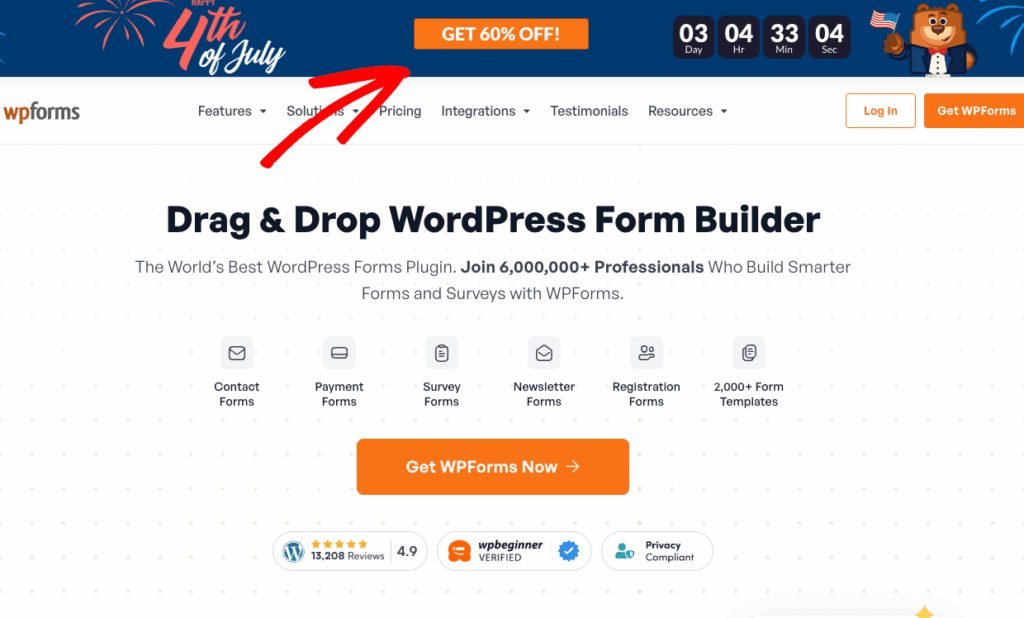
A floating bar popup is a non-intrusive, sticky banner that remains fixed at the top or bottom of a web page as the user scrolls.
Its constant visibility makes it ideal for promoting site-wide announcements, ongoing sales, or consistent calls to action, without obstructing the main content.
Why Floating Bars Boost eCommerce Sales:
- Non-Intrusive Engagement: They deliver an offer or message without interrupting the user’s browsing experience, making them much less likely to annoy your shoppers.
- Persistent Visibility: Remaining visible as visitors scroll ensures important offers or information are constantly reinforced. This increases the chances of engagement.
- Great for Store-Wide Messages: Ideal for communicating universal messages like free shipping thresholds, limited-time offers, or urgent updates across your entire store.
When to Deploy Floating Bars for Maximum Revenue:
- Immediate Load: Display right when pages load for immediate (yet subtle) visibility of ongoing promotions or messages (e.g., “Free Shipping on Orders Over $50!”).
- Specific Page Views: Use on product pages to highlight complementary offers, or on blog posts to encourage newsletter sign-ups.
- Cart Page Reminders: Employ on your shopping cart page to remind customers of shipping incentives or last-minute upsells before checkout.
- Exit-Intent (Alternative): As a less aggressive alternative to a lightbox. A floating bar can appear upon exit-intent to offer a final discount without a full screen takeover.
Example Case Study: One of our users, Cosmetic Capital, increased leads by 300% after implementing a strategic floating bar campaign. The right message in a non-intrusive format makes that kind of growth possible.
Want to see how easy it is to create floating bar campaigns with OptinMonster? Watch this quick tutorial:
Fullscreen Welcome Popups
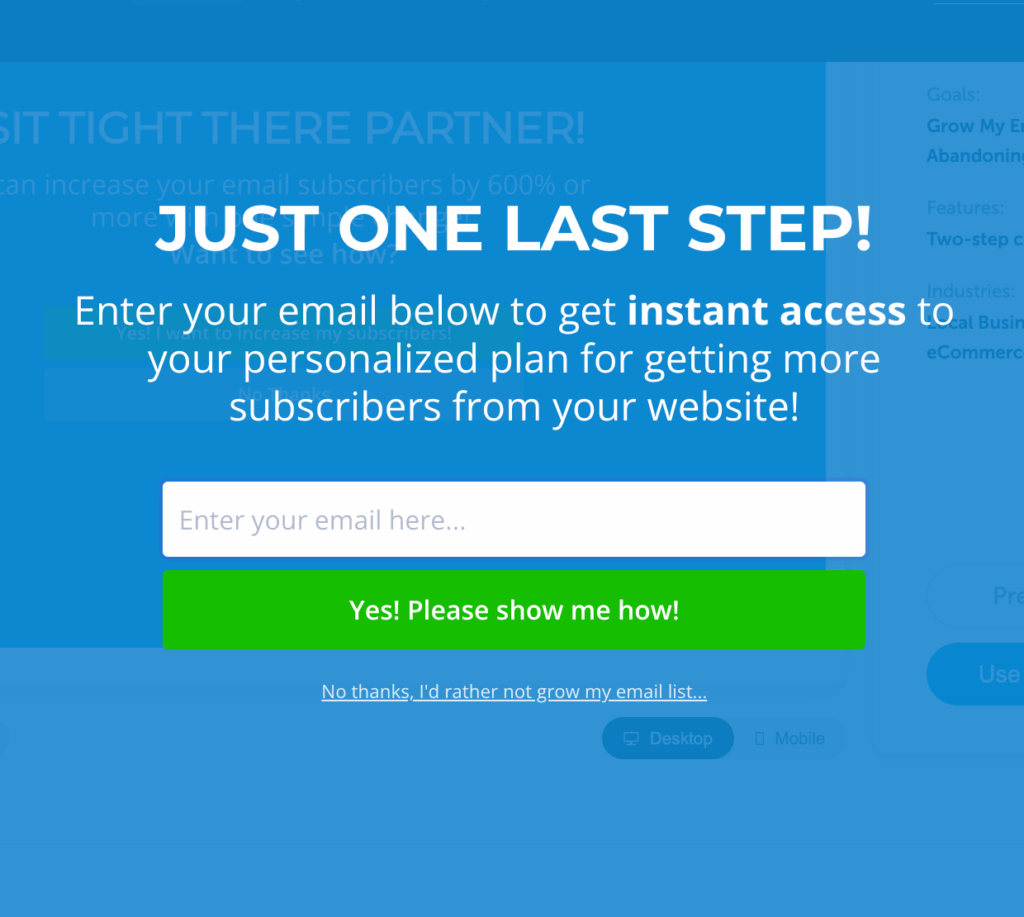
A fullscreen popup (also known as a welcome gate or splash page) completely covers the entire web page, requiring visitors to interact with it before continuing.
This commanding display is perfect for critical announcements, major sales events, or essential user confirmations, like age verification.
Why Fullscreen Popups are Great For eCommerce:
- Unavoidable Attention: They capture 100% of the visitor’s attention, ensuring that important messages or high-value offers are seen and considered.
- High Conversion for Key Actions: Excellent for driving critical actions like email list sign-ups for significant discounts, or for managing entry requirements such as age verification.
- Boosts Your Brands’ Impact: This large popup format lets you showcase your brand and promos in a bold, memorable way that builds trust and drives more sales.
When to Use Full-Page Welcome Popups:
- Major Site-Wide Announcements: Ideal for big sales events (e.g., Black Friday, Cyber Monday) or new product line releases that need maximum visibility.
- Age Verification: Essential for businesses selling age-restricted products (e.g., alcohol, tobacco) to ensure legal compliance.
- First-Time Visitor Welcome: Present an attractive offer (e.g., 20% off your first order) to new users to encourage immediate engagement and email capture.
- Content Upgrade (Blog): Offer exclusive lead magnets or content upgrades on specific blog posts to build a targeted subscriber list.
Example Case Study: One of our customers, ClickBank, recovered 32.67% of abandoning visitors and doubled their sales using strategic fullscreen popups. When your message truly matters, going fullscreen delivers results.
Want to see how easy it is to create fullscreen welcome campaigns with OptinMonster? Watch this quick tutorial:
Slide-In Popups
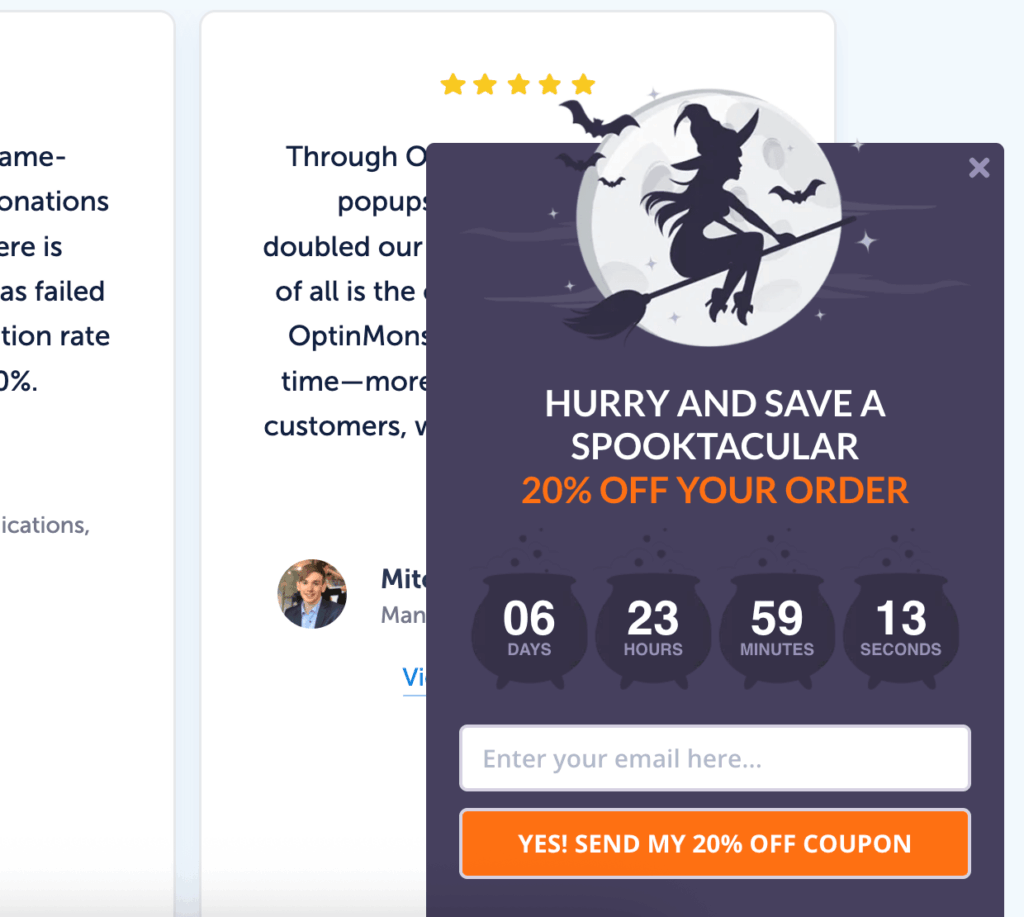
A slide-in popup appears from the side or corner of the screen, usually triggered by scroll activity or time spent on the page.
Less intrusive than a lightbox, it subtly guides visitors to product suggestions, social proof, or secondary CTAs without interrupting their browsing.
Why Slide-In Popups Are Great For eCommerce Leads & Sales:
- More Engagement, Less Disruption: They catch attention without blocking the main content, creating a smoother user experience while still delivering key messages.
- Contextual & Timed: Trigger them based on specific behaviors (like reading a product review) to show relevant offers or recommendations.
- Perfect for Secondary CTAs: Great for nudging less urgent actions like joining a loyalty program, exploring related products, or sharing content.
When to Deploy Slide-In Popups for Maximum Impact:
- Scroll Depth: Trigger after a user scrolls 50-70% down a product page to suggest complementary items or special offers.
- Time on Page: Appear after a visitor spends time on a page, prompting them to subscribe or explore related content.
- After Specific Actions: Display after a customer adds an item to their cart. Perfect for upsells or cross-sells.
- Social Proof Integration: Slide in recent purchases or positive reviews to build trust as shoppers browse.
Example Case Study: One of our users, Storyly, increased conversions by 80% using targeted slide-in campaigns. The non-intrusive format lets you guide shoppers without disrupting their flow.
Want to see how easy it is to create slide-in campaigns with OptinMonster? Watch this quick tutorial:
Countdown Timers
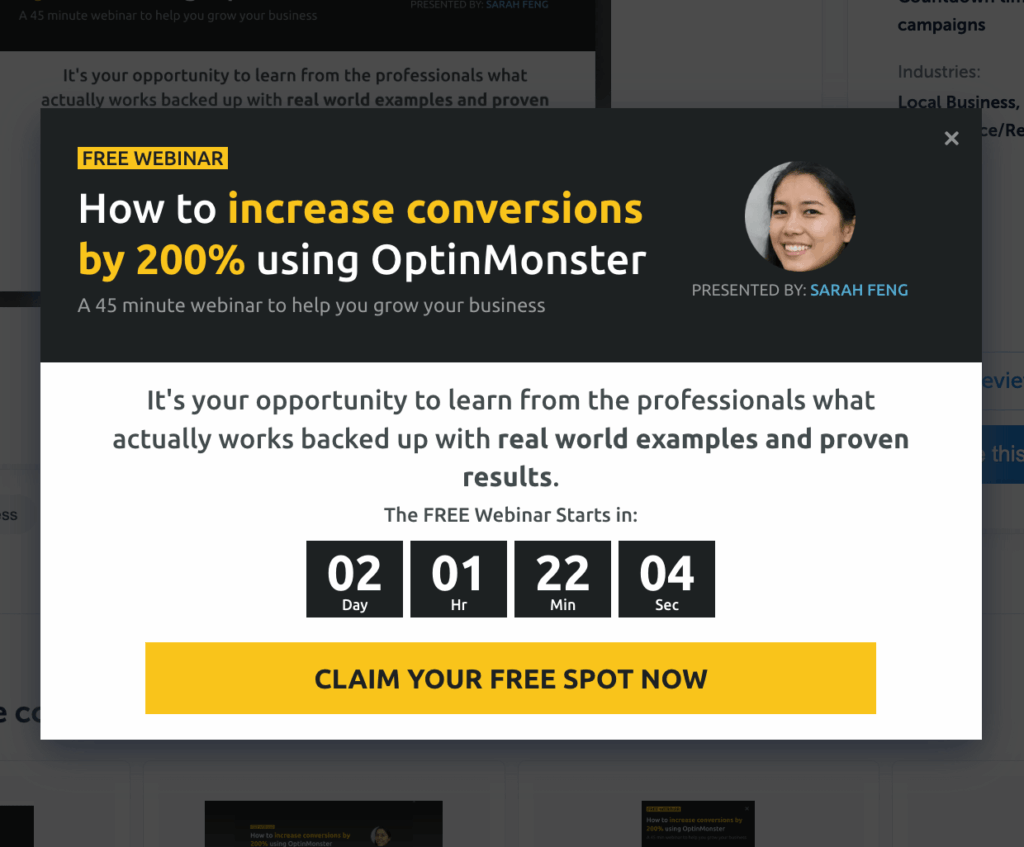
A countdown timer popup adds a real-time clock to a popup or floating bar. This visual cue taps into urgency and scarcity, motivating shoppers to act fast on flash sales, limited-time offers, or shipping cutoffs.
Why Countdown Timer Popups Help Drive eCommerce Revenue:
- Creates Urgency: The ticking clock triggers FOMO, pushing visitors to decide faster.
- Boosts Impulse Buys: Perfect for flash sales or low-stock items that benefit from quick action.
- Increases Conversions: Deadlines drive results and these popups can significantly lift time-sensitive campaign performance.
When to Deploy Countdown Timers for Maximum Urgency:
- Flash Sales: Show immediately or after a short delay for store-wide promotions.
- Product-Specific Offers: Trigger on product pages with limited-time discounts.
- Shipping Deadlines: Use on cart or checkout pages to highlight order-by dates for guaranteed delivery.
- Cart Abandonment: Add a countdown to exit-intent popups to recover abandoned carts with a timely offer.
Example Case Study: One of our users, Cracku, increased conversions by 300% simply by adding countdown timers to their campaigns. Visible deadlines create the urgency shoppers need to stop browsing and start buying.
Want to see how easy it is to create countdown timer campaigns with OptinMonster? Watch this quick tutorial:
Coupon Popups
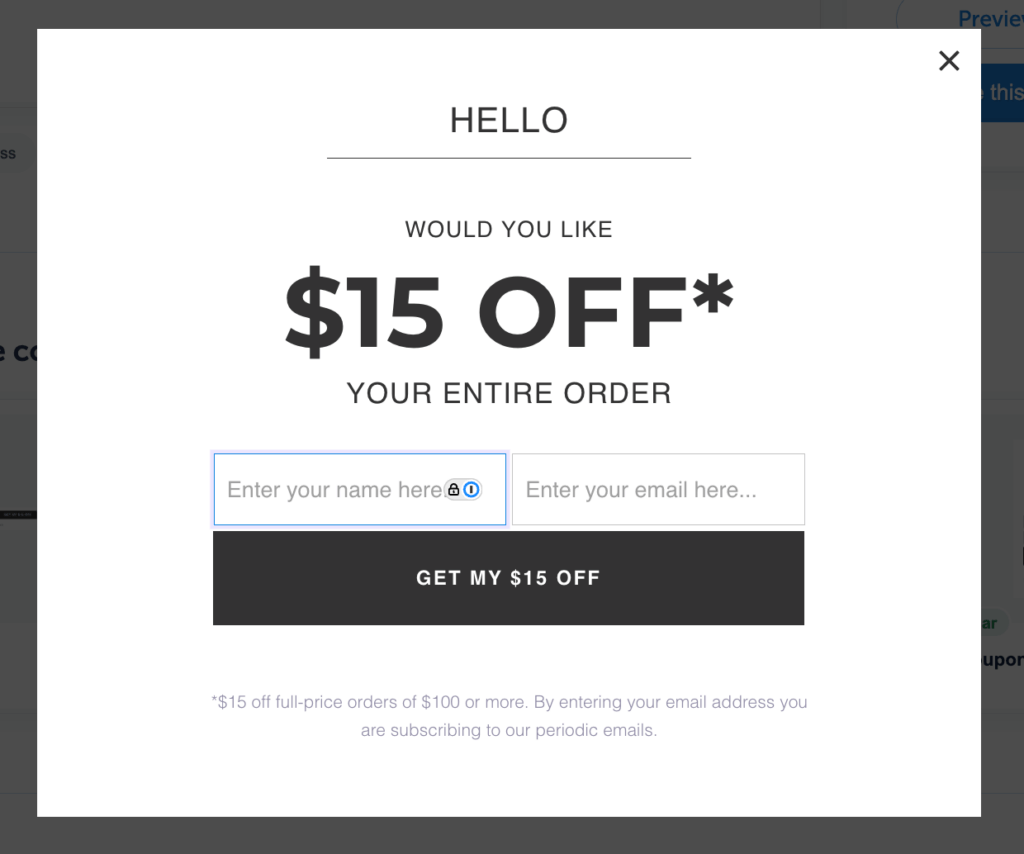
A coupon popup delivers instant discount codes or special offers to visitors. It’s most effective for price-sensitive shoppers, first-time buyers, or those close to abandoning their cart. It provides immediate value and savings to drive more purchases.
Why Coupon Popups Convert Price-Conscious Shoppers:
- Direct Incentive: Give visitors a clear, immediate reason to buy or take action.
- Reduces Cart Abandonment: A well-timed coupon can be the deciding factor for a shopper hesitant to complete their purchase.
- Attracts New Customers: Offering a first-purchase discount is a proven strategy for acquiring new leads and converting them into buyers.
- Increases Average Order Value (AOV): Encourage more spending by linking discounts to minimum purchase thresholds.
When to Deploy Coupon Popups for Maximum ROI:
- Exit-Intent: As a last-ditch effort to prevent abandonment, offer a discount code when a user attempts to leave.
- First-Time Visitors: Present a welcome discount to new site visitors to encourage their initial purchase or email sign-up.
- Specific Product Views: On high-value or slow-moving product pages, offer a slight discount to encourage conversion.
- After X Page Views: If a user has browsed multiple pages without converting, a coupon can serve as the nudge they need.
- Segmented Offers: Deliver different coupon codes based on visitor source (e.g., social media vs. organic search) or specific products in their cart.
Example Case Study: One of our users, Crossrope, grew their email list by 900% each month using exit-intent coupon popups. The combination of valuable discounts and perfect timing creates results that transform businesses.
Spin-to-Win Popups
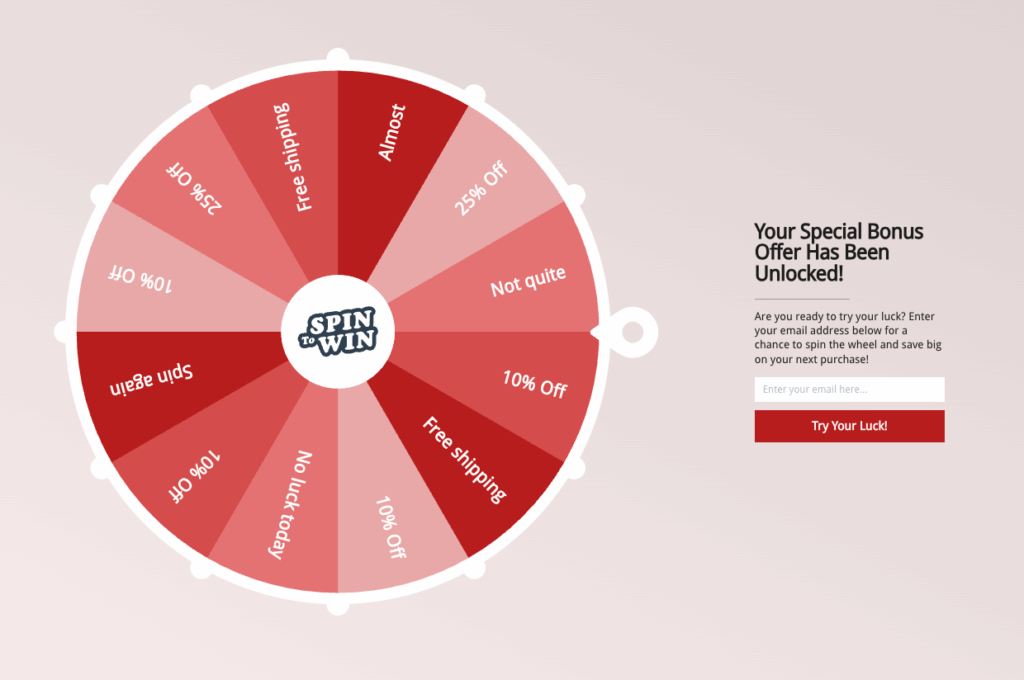
A spin-to-win popup is a gamified popup with a virtual wheel that visitors spin to win prizes or discounts, usually in exchange for their email.
This fun, interactive approach turns lead capture into an engaging experience, boosting participation and memorability.
Why Spin-to-Win Popups Drive Results for eCommerce:
- High Engagement Rates: The interactive nature of gamification increases visitor participation compared to static forms.
- Boosts Email List Growth: Users are more willing to provide their email address for a chance to win a prize, helping to grow your list faster.
- Creates a Positive Brand Experience: The fun and interactive element leaves a positive impression, enhancing your brand perception.
- Instant Gratification: Winners receive an instant prize (e.g., a discount code), encouraging immediate use and more sales.
When to Deploy Spin-to-Win Popups for Maximum Results:
- Welcome New Visitors: Ideal for greeting first-time visitors with a fun opportunity to earn a discount on their initial purchase.
- During Sales Events: Integrate into broader sales campaigns to make discounts more engaging and memorable.
- After Specific Browsing Time: Trigger after a user has spent a few minutes on your site and has shown a clear level of interest.
- Re-engagement: Offer to users who have been inactive for a while or returning visitors as a fresh way to re-engage them.
- Lead Generation Pages: On pages designed to capture leads, this offers a more exciting alternative to a standard sign-up form.
Example Case Study: One of our users, PortraitFlip, converts over 3% of mobile traffic into leads using spin-to-win popups. The interactive format works especially well on mobile devices where engagement typically lags.
Want to see how easy it is to create spin-to-win campaigns with OptinMonster? Watch this quick tutorial:
Key Takeaways: Choosing the Right eCommerce Popup
- Use a lightbox popup to grab full attention for important offers.
- Choose a floating bar for ongoing announcements that won’t interrupt browsing.
- Select a fullscreen popup for major events or age verification.
- Use a slide-in popup for subtle product suggestions or to display social proof.
- Add a countdown timer to popups to create urgency and prompt faster action.
- Display a coupon popup to convert price-conscious shoppers and reduce abandonment.
- Try a spin-to-win popup for interactive, gamified lead capture that boosts engagement.
How to Optimize Your eCommerce Popups for More Conversions & Sales
To optimize your eCommerce popups for conversions, focus on creating popups that are relevant, well-timed, and user-friendly.
Effective popups improve the customer experience, encourage engagement, and drive more sales. They do this by providing the right offer, to the right person, at the right time.
Trigger Your Popups at the Right Time
Displaying popups at key moments, like when a visitor is about to leave or after they’ve spent time on your site, ensures your offers reach shoppers at the perfect time.
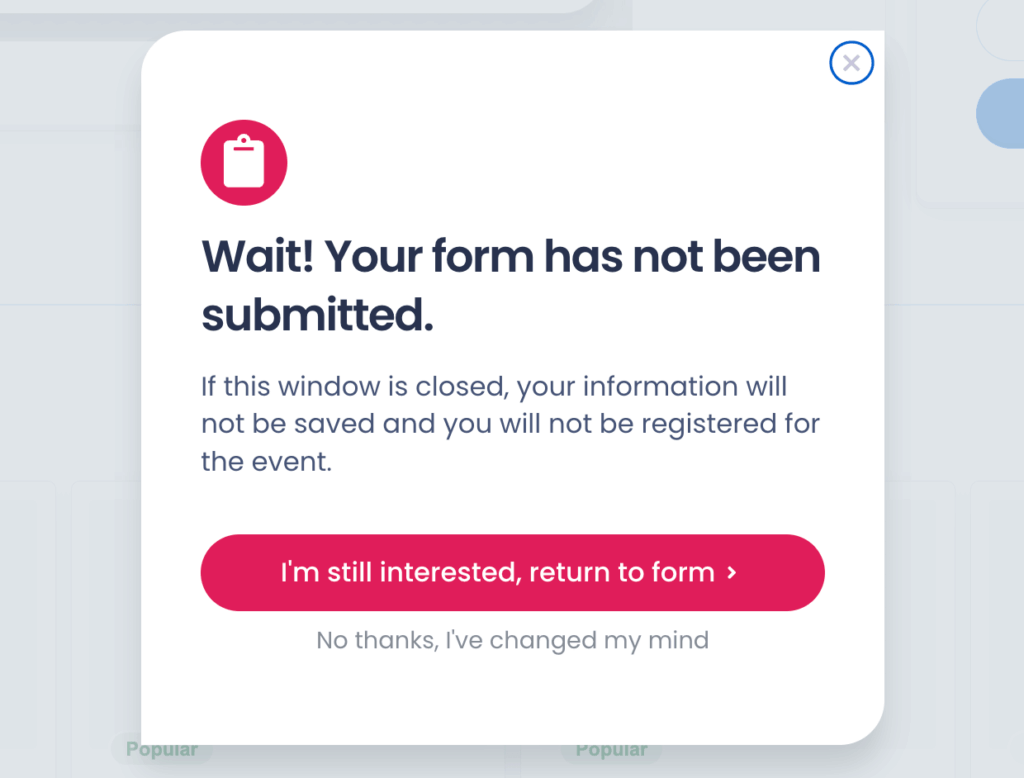
Smart timing prevents interruptions, maximizes conversions, and helps recover sales that would normally be lost.
- Rescue Sales with Exit-Intent Triggers: Catch visitors as they’re about to leave with a final offer or incentive to complete their purchase or opt in.
- Engage Interested Shoppers with Timed Displays: Show popups only after shoppers have invested time on a page, targeting those who have shown interest and are more likely to act.
- Win Back Attention with Inactivity Triggers: Bring distracted visitors back into your buying journey by displaying a popup after periods of inactivity.
- Drive Urgency with Scheduled Campaigns: Align popups with sales events or peak hours, launching offers exactly when they’ll have the greatest impact.
Personalize Popup Forms for Every Visitor
Personalized popups use data like visitor location, browsing behavior, and traffic source to deliver messages that feel more relevant and valuable.
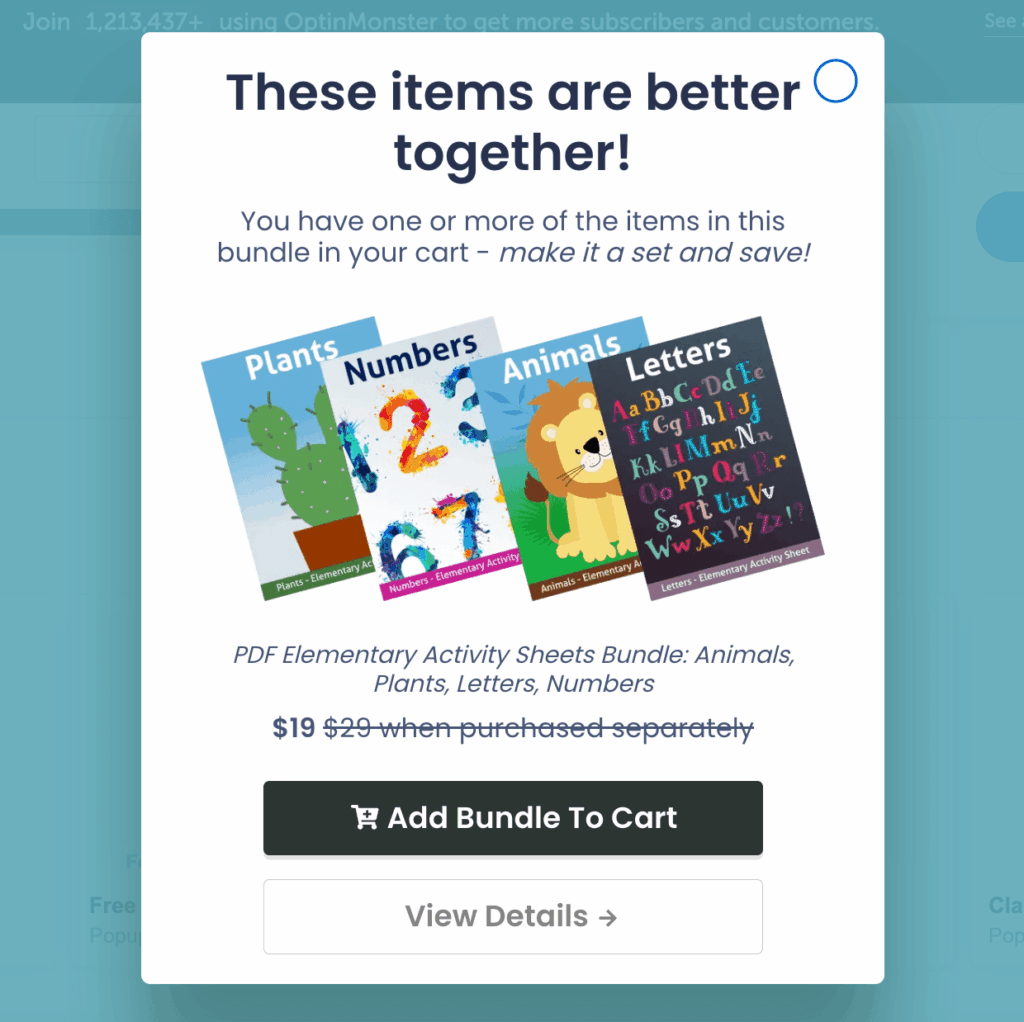
This leads to higher engagement, stronger trust in your brand, and increased conversions. This is because shoppers see offers tailored to their needs.
- Boost Relevance with Geo-Targeting: Show location-based content, including local currencies and region-specific promotions, to connect with shoppers instantly.
- Target by Intent with Page-Level Popups: Display messages related to the exact product, category, or cart page being viewed to match shoppers’ interests.
- Customize Experiences with Referrer Detection: Adapt your offers based on whether visitors arrive from email, ads, or social media for maximum consistency and appeal.
- Create Connection with Smart Tags: Use dynamic fields, such as the shopper’s name or city, to make each popup feel like a one-on-one conversation.
Analyze Popup Performance and Test Regularly
Analyzing popup analytics and running continual A/B tests makes it easier to refine your strategy. This way you can capitalize on what works, and keep improving conversions.
This data-driven approach ensures your popups evolve alongside your customers and deliver the best possible results.
- Measure Success with Conversion Analytics: Track popup performance by monitoring impressions, clicks, conversions, and attributed revenue.
- Maximize Results with A/B Testing: Experiment with different designs, offers, and copy to discover the variants that drive the most engagement.
- Prioritize Winning Campaigns with Revenue Attribution: Focus on the popups that directly lead to sales, not just clicks or sign-ups.
Key Takeaways: eCommerce Popup Optimization:
- Time popups strategically: Use exit-intent, inactivity, or scheduled triggers to reach visitors at the right moment.
- Personalize every offer: Tailor popups using location, behavior, or traffic source for higher relevance and engagement.
- Keep popups user-friendly: Make dismissal easy and avoid interrupting the shopping flow.
- Analyze and test regularly: Track performance and run A/B tests to identify what works best and keep improving your results.
What Are Common Popup Mistakes in eCommerce and How Can I Avoid Them?
Mistake 1: Showing Popups Too Early
The Problem:
Displaying a popup the moment someone lands on your site is disruptive. Visitors haven’t had time to browse or understand your brand, so an early interruption often leads to higher bounce rates and lower engagement.
How to Avoid This:
- Implement a Delay: Set a minimum delay of 5-10 seconds before your popup appears.
- Use Scroll Depth Triggers: Show the popup only after a user has scrolled 30-50% down the page.
Mistake 2: Displaying Generic, Non-Personalized Offers
The Problem:
Showing the same generic popup to all visitors makes your offers feel irrelevant. Without personalization, popups get ignored and conversion rates drop.
How to Avoid This:
- Utilize Behavioral Targeting: Show messages based on actions like pages viewed, items in cart, or past purchases.
- Leverage Page-Level Targeting: Match offers to the specific product or category page.
- Offer Unique Deals: Customize offers for first-time visitors, return users, or different traffic sources.
Mistake 3: Not Optimizing Popups for Mobile Devices
The Problem:
Popups built only for desktop often frustrate mobile users. Poor mobile design (like hard-to-close windows or oversized elements) can lead to abandonment and hurt SEO performance.
How to Avoid This:
- Use Mobile-Optimized Templates: Choose responsive designs that work across all mobile devices.
- Ensure Readability and Accessibility: Make text easy to read and CTAs large enough to tap.
- Prominent Close Button: Always include a visible, accessible close option.
Mistake 4: Making Popups Hard to Close
The Problem:
If users can’t quickly close a popup, it creates frustration, especially on mobile. This harms user experience, damages brand trust, and can cost you conversions.
How to Avoid This:
- Prominent “X” Button: Keep the close button visible, easy to tap, and consistently placed.
- Allow Outside Click Dismissal: Let users close the popup by clicking outside the window.
- Keyboard Accessibility: Support closing via the ‘Escape’ key for accessibility on desktop.
Frequently Asked Questions
What types of eCommerce popup forms work best for online stores?
The most effective ecommerce popup forms serve a specific purpose in the customer journey, some top examples include:
- Exit-intent popups: Recover abandoning visitors by displaying an offer as shoppers attempt to leave.
- Welcome discount popups: Capture new shoppers’ emails by offering a first-time purchase incentive.
- Cart abandonment reminders: Prompt visitors to complete their order if they leave items in the cart.
- Product recommendation popups: Suggest additional or related products to increase average order value.
- Email capture forms: Collect email addresses to grow your subscriber list for future marketing.
Are popups still effective for eCommerce in 2025?
Yes, popups are still effective for eCommerce in 2025. When used thoughtfully, they boost conversions, grow email lists, and recover lost sales.
To avoid negative impacts on user experience or SEO, popups should be well-timed, relevant, and easy to dismiss.
What is the best timing for showing eCommerce popup forms?
The ideal timing for eCommerce popups depends on the popup type and device.
In general, welcome offers perform best with a 5-10 second delay, exit-intent popups should trigger as visitors attempt to leave, and mobile popups are most effective with a short delay of 3-5 seconds.
Will popups hurt my SEO or slow down my eCommerce store?
No, properly implemented popups will not harm SEO or slow down your store.
Popular tools like OptinMonster load asynchronously for fast performance and comply with Google’s guidelines by not instantly covering main content, ensuring both SEO safety and high conversion rates.
How do I prevent eCommerce popup forms from annoying my customers?
To prevent popups from annoying visitors, use behavioral and timing triggers instead of showing them instantly.
Personalize offers to match what users are viewing, make dismissing popups easy, and set frequency limits. Finally, test different formats with your audience to find what works best.
Should I use different popups for mobile and desktop?
Yes, it is best practice to use mobile-optimized popups for mobile visitors. These should be smaller and load quickly, triggered by scroll or tap behavior.
Desktop popups can be more detailed and use mouse-movement triggers. Most popular popup tools allow device-specific campaigns.
What legal considerations apply to eCommerce popup forms?
eCommerce popups must comply with privacy and accessibility standards.
Include privacy policies on opt-in forms, use GDPR consent checkboxes for EU visitors, follow CAN-SPAM rules, and ensure accessibility for screen readers and keyboard navigation.
Do I need coding skills to add eCommerce popup forms to my store?
No coding skills are required to add popups with modern tools like OptinMonster.
You can use drag & drop editors and pre-designed templates to easily create and publish popups on platforms like Shopify, WooCommerce, and BigCommerce.
Start Growing Your Sales With eCommerce Popup Forms Today
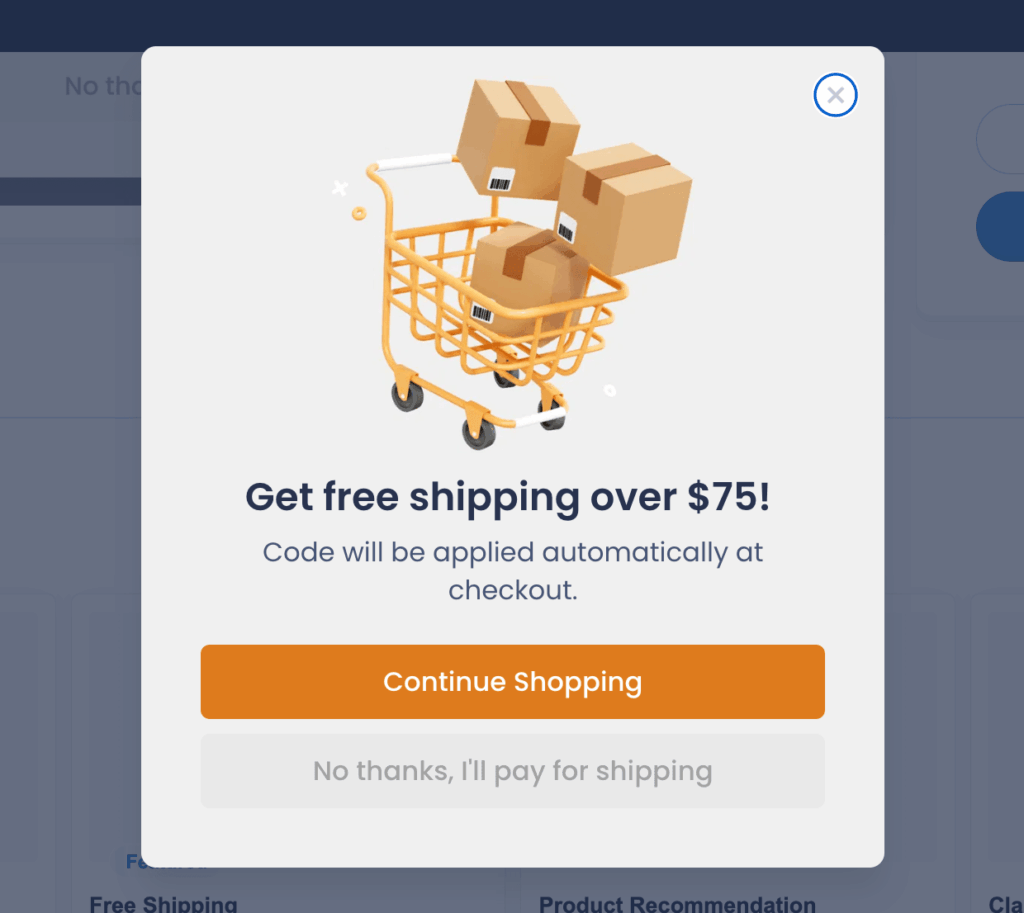
eCommerce popups aren’t just a nice-to-have, they’re a critical tool for turning more of your visitors into customers and subscribers.
By showing the right offer at the right moment, you have the power to:
- Recover Lost Sales: Re-engage abandoning visitors with compelling incentives.
- Expand Your Email List: Consistently grow your subscriber base with high-quality leads.
- Significantly Boost Revenue: Increase average order values and overall sales without compromising your shopping experience.
To Get Started:
- Choose one popup type that addresses your most pressing need (like exit-intent to reduce cart abandonment or a welcome offer for new visitors).
- Launch your first campaign, monitor the results, and optimize based on the data.
- Gradually add more popup types and triggers to different points in the customer journey.
- Personalize offers and messages for even better conversion rates.
- Keep testing and refining your campaigns for continuous growth.
Keep Learning and Growing:
Want more strategies to boost your eCommerce success? Check out these resources:
- eCommerce Popups That Work: How to Increase Sales and Recover Abandoned Carts
- 11 Types of Popups You Should Be Using (With Examples)
- 15 eCommerce Best Practices: Set up Your Business for Success in 2025
- 12 OptinMonster Secrets to Reduce Cart Abandonment and Boost Sales
- 40 Exit-Intent Popup Strategies to Keep Visitors Engaged and Boost Sales
Ready to Turn More eCommerce Visitors into Customers?
OptinMonster makes it easy to create, test, and optimize popup campaigns that actually convert. Set up your first campaign in minutes and start seeing sales increase immediately.
Join over 1.2 million websites already using OptinMonster to capture more leads and drive more sales.

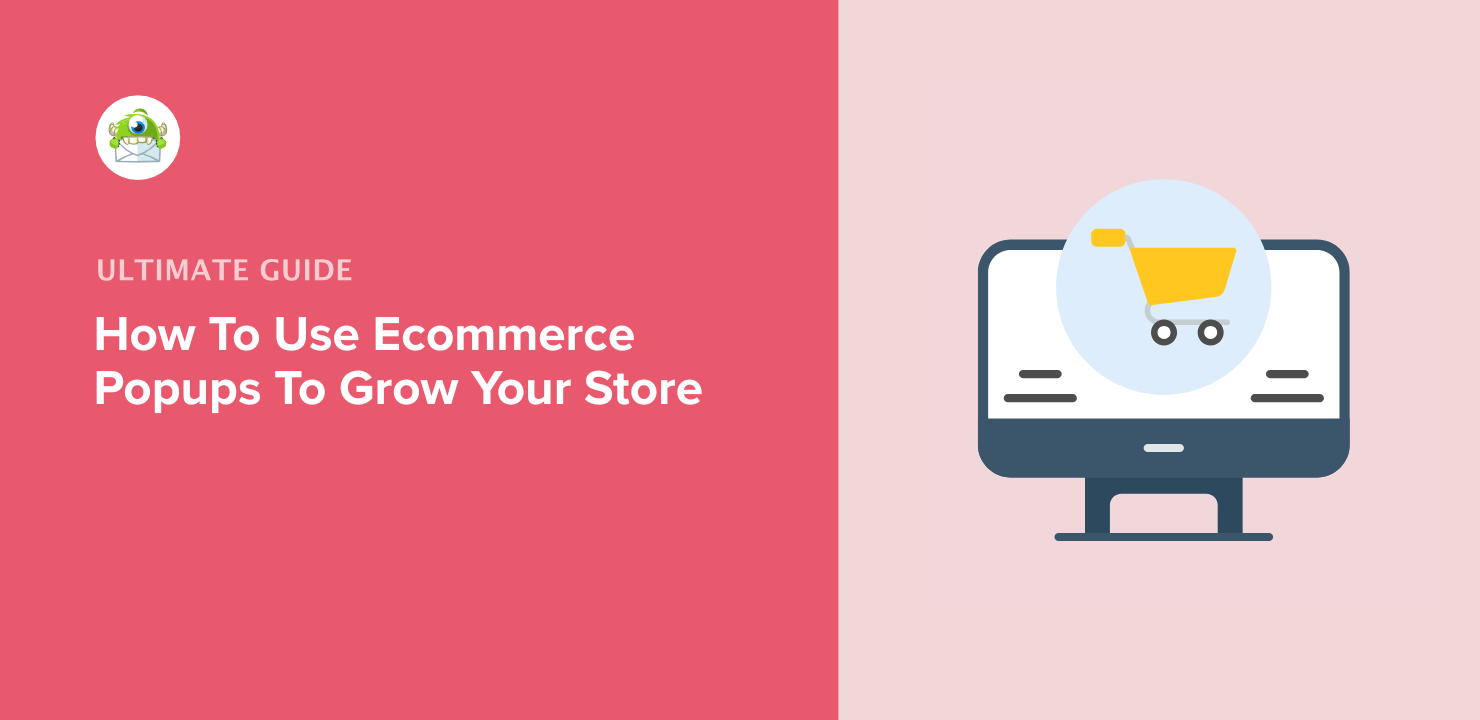


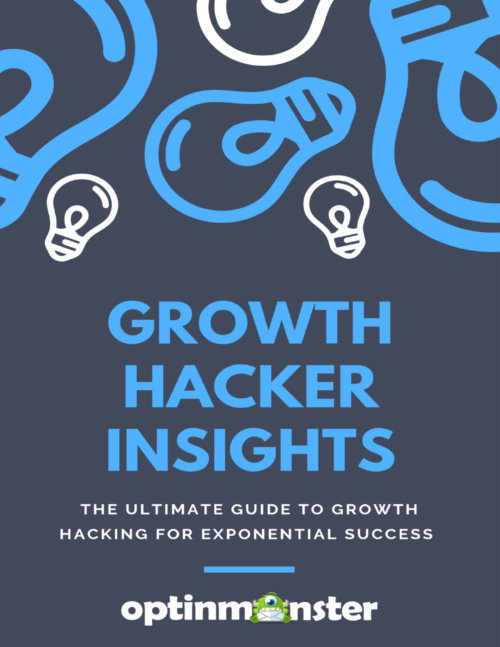
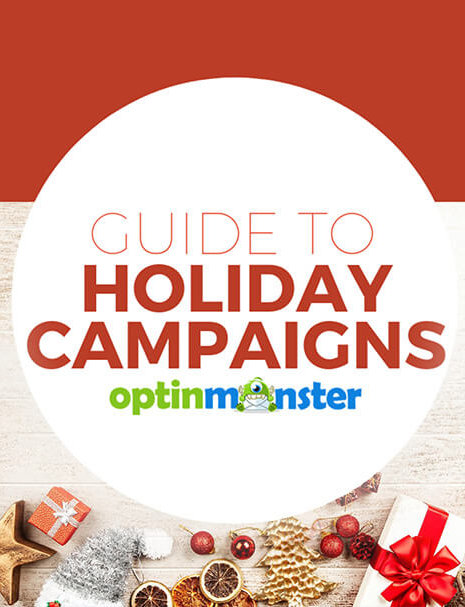
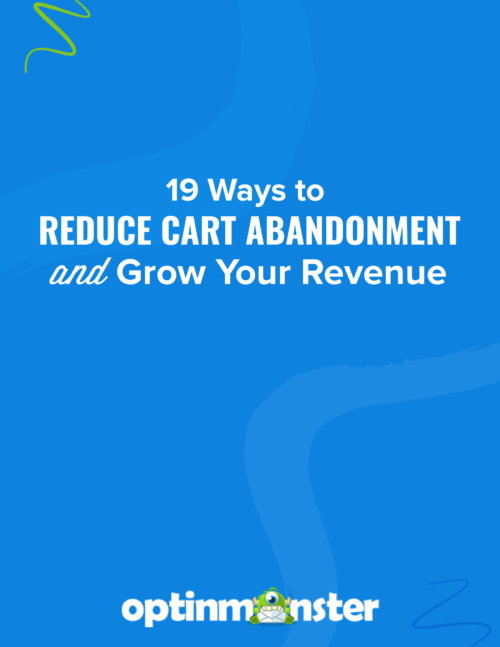



Add a Comment